![]()
![]()
![]()
Use LEFT and RIGHT arrow keys to navigate between flashcards;
Use UP and DOWN arrow keys to flip the card;
H to show hint;
A reads text to speech;
75 Cards in this Set
- Front
- Back
- 3rd side (hint)
|
NEOCLASSICISM |
Revival of Classical Architecture; GREEK & ROMAN.
Simple, strongly geometric composition; shallow reliefs on facades; “Temple–Like” as ideal form. Style was influenced by Vitruvian Principles & Works of Andrea Palladio. |
|
|
|
NEOCLASSICISM |

Revival of a classical style (Greek and Roman orders as decorative motifs). Simple, strongly geometric composition Shallow relieves of facades Styles for US Government Buildings. |
|
|
|
NEOCLASSICISM |

Is the name given to Western movements in the decorative and visual arts, literature, theatre, music, and architecture that draw inspiration from the "classical" art and culture of classical antiquity. |
|
|
|
NEO-CLASSICAL |
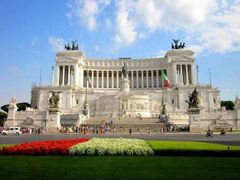
Architectural Character of Victor Emmanuel II Monument, Rome. |
|
|
|
ST. GEORGE'S HALL, LIVERPOOL |
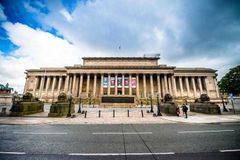
Most Magnificent Neo-Classical monuments in Britain; Designed by Harvey Lonsdale Elmes. |
|
|
|
UNITED STATES CAPITOL, WASHINGTON D.C. |

Architect was William Thornton. |
NEO-CLASSICAL |
|
|
MONTICELLO |
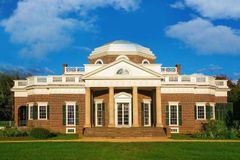
Neoclassicism with American materials Architect: Thomas Jefferson. |
|
|
|
PARIS OPERA HOUSE |
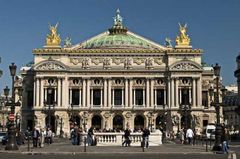
BY CHARLES GARNIER. NEO-BAROQUE, NEOCLASSIC. |
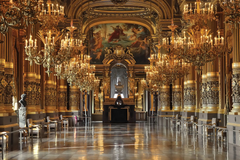
|
|
|
THE CONSERVATORY, CARLTON HOUSE, LONDON |
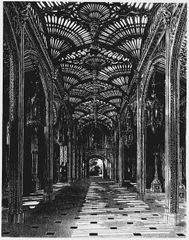
Cast-Iron for Structural and decorative purpose. Architect is Thomas Hopper. |

NEO-CLASSICAL |
|
|
GUISEPPE SACCONI |

Architect of Victor Emmanuel II Monument, Rome. |
NEO-CLASSICAL |
|
|
COLONIAL STYLE |

The Renaissance movement reached the easier colonies through the GEORGIAN STYLE by the way of England;
Simple, Symmetrical Architecture; Combined Refined Delicate Mouldings With Slender, Graceful Columns. |
|
|
|
GREEK REVIVAL |
Remained the accepted Style of Churches in the U.S. into the 20th Century.
Greek Forms & Details – Pleasing to Eye but Illogical in Function; only an Architecture of Facade Arrangements.
Pedimented Gable; Symmetrical Shape; Heavy Cornice; Wide, Plain Frieze; Bold, Simple Moldings. |
|
|
|
GREEK REVIVAL |
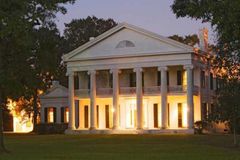
A neoclassical style of architecture inspired by and incorporating features of Greek temples from the 5th century BC, popular in the US and Europe in the first half of the 19th century. |
|
|
|
GREEK REVIVAL |
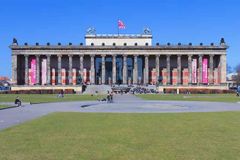
Architectural Character of the Altes Museum, Copenhagen. |
|
|
|
STRAWBERRY HILL
|
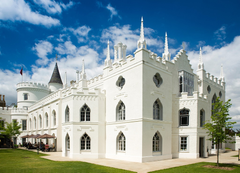
BY HORACE WALPOLE
|
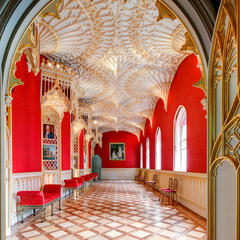
|
|
|
GOTHIC REVIVAL |
People began to tire the Greek style formality, thus they turned into the informality of Gothic.
Style Adaptation was not successful in capturing the spirit of the style which resulted to hard and cold structures which also lacked flexible quality of European buildings. |
|
|
|
GOTHIC REVIVAL |
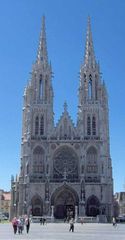
Architectural style that drew its inspiration from medieval architecture and competed with the Neoclassical revivals in the United States and Great Britain. |
|
|
|
WESTMINSTER NEW PALACE, LONDON |

House of Parliament Designed by Sir Charles Barry; Non - Classical Design by Agustus Pugin. |
|
|
|
WESTMINSTER NEW PALACE, LONDON |

First Major public Building of Gothic Revival. |
|
|
|
GOTHIC REVIVAL |

Houses of Parliaments. Charles Barry and Augustus Welby Northmore Pugin. |
|
|
|
BIG BEN |
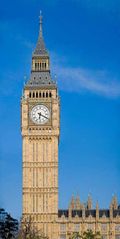
Clock tower of Westminster New Palace. |
|
|
|
NEO-GOTHIC |
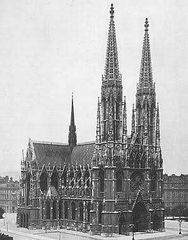
Architectural style of the Votivkirche, Vienna. |
|
|
|
VOTIVKIRCHE, VIENNA |

BY HEINRICH VON FRESTEL. |
GOTHIC REVIVAL |
|
|
ST. GILES, CHEADLE, STAFFS |
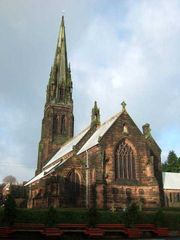
Designed by Pugin. |
GOTHIC REVIVAL |
|
|
IMRE STEINDL |
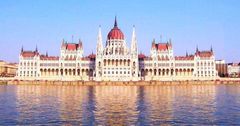
Architect of Hungarian Parliament, Budapest. |
GOTHIC REVIVAL & RENAISSANCE REVIVAL
|
|
|
THE CATHEDRAL, GUILDFORD |

Designed by Sir Edward Maufe. |
|
|
|
VICTORIAN STYLE |
70’s & 80’s Brought romance through the medium of architecture & interior decoration.
Beauty with meaningless turrets, gables & jigsaw ornaments & resulted with no structural sense.
Was exemplified by the so-called “EAST LAKE STYLE” & THE VICTORIAN GOTHIC. |
|
|
|
CRYSTAL PALACE, LONDON |
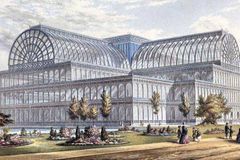
One of the most remarkable building in 19th Century Britain under Victorian Period - free of any traditional precent. House the Great Exhibition of 1851, erected in hyde Park, moved to Sydenham in 1852 to 1854; Designed by Sir Joseph Paxton. |
VICTORIAN STYLE |
|
|
EARLY VICTORIAN |

Period in Britain year 1830 to 1850 A.D. Renaissance and Gothic Revival in Europe. Structural use of Iron. |
|
|
|
HIGH VICTORIAN |
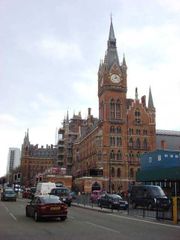
Period in Britain year 1830 to 1850 A.D. A bold reinterpretation of Gothic for the modern age. Employs polychromy, strong patterns, juxtapositions of materials. |
|
|
|
LATE VICTORIAN |
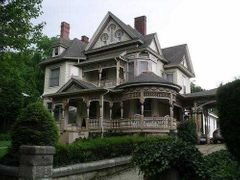
An architecture that reflects the staid, family-centered mindset of Queen Victoria's reign, which extended from 1837-1901. A heavy style, the Victorian touch runs to red brick, imposing, fortress-like facades, and an absence of beauty for its own sake. |
|
|
|
THE UNIVERSITY MUSEUM, OXFORD |

Landmark of High Victorian Gothic; Designed by Benjamin Woodward. |
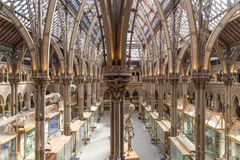
|
|
|
BENJAMIN WOODWARD |
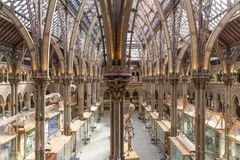
Architect of The University Museum, Oxford. |
|
|
|
TUDOR REVIVAL |
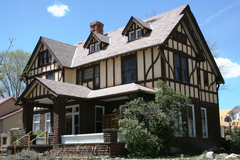
Simple, Rustic & the less impressive aspects of Tudor Architecture, imitating medieval cottages or country houses.
More Modest Characteristics; Gave it Its More Striking Effects. |
|
|
|
TUDOR REVIVAL |
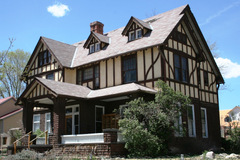
- Steeply Pitched Roofs; High Chimneys, Jettied (Overhanging); Often Thatched Roofs - Half-Timbering Often Infilled With Herringbone Brickwork. - First Floors Above Pillared Porches. - Tall Mullioned Windows or Dormer Windows Supported By Consoles. |
|
|
|
ROMANESQUE REVIVAL
|
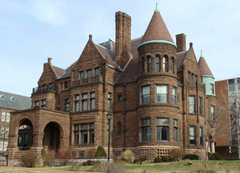
RICHARDSONIAN ROMANESQUE
|
|
|
|
ROMANESQUE REVIVAL |
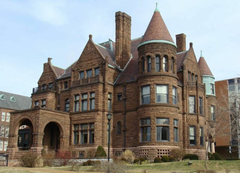
- Bold & Massive Details; Features More Simplified Arches & Windows than their historic counterparts. - Style was popularized by Henry Hobson Richardson. - Richardson is one of "the recognized Trinity of American Architecture" Along with Louis Sullivan & Frank Lloyd Wright. |
|
|
|
NEO-ROMANESQUE |
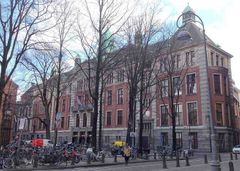
Architectural style of the Stock Exchange, Amsterdam by HP Berlage. |
|
|
|
RENAISSANCE REVIVAL |
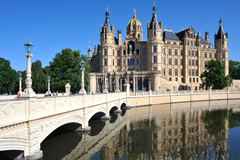
This style was in reality an eclectic blending of past styles.
Due of its diversity; an Architecture style to have existed in so many forms, yet still common to so many countries.
Great Staircases Of CHATEAUX OF BLOIS & CHAMBORD – Most widely copied feature of Renaissance Architecture. |
NEO-RENAISSANCE ARCHITECTURE |
|
|
RENAISSANCE REVIVAL |
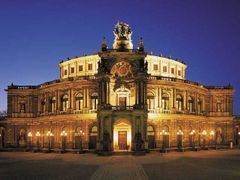
Architectural Character of Dresden Opera by Gottfried Semper. |
|
|
|
PAUL WALLOT |
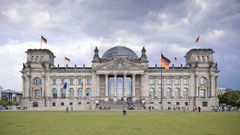
The Architect of Reichstag, Berlin (Renovated by Norman Foster). |
RENAISSANCE REVIVAL |
|
|
CITY BEAUTIFUL MOVEMENT |
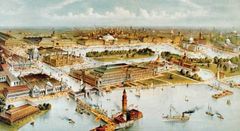
Beaux-Art eclecticism Mc Millan Plan: National Mall in Washington.
Urban planning by DANIEL BURNHAM; Characterized by Monumentally-Placed Buildings,Grand Promenades, Spacious Plazas, & Classical Sculpture. |
|
|
|
MCMILLAN PLAN |
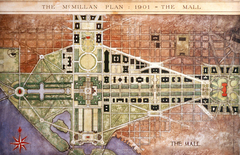
Comprehensive plan of Washington DCs Monumental Core & Park System.
Has National Mall; Lincoln Memorial (bottom); Washington Monument (center); & US Capitol (top). |
|
|
|
ECLECTICISM |
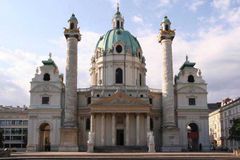
Age of revivals. |
|
|
|
ART NOUVEAU |
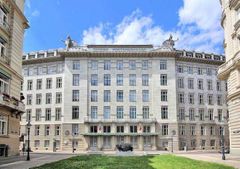
Architectural character of Post Savings Bank, Vienna by Otto Wagner. |
|
|
|
ART NOUVEAU |
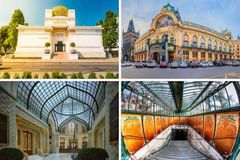
A decorative style of art, popular in Europe and America from the 1880s to the 1930s. This style is usually characterized by flowing lines, flat shapes, and vines and flowers. "Arts and Crafts Movement". |
|
|
|
LE MODERN STYLE |
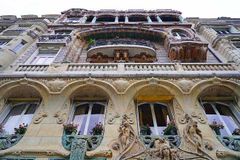
Art Nouveau version in France. |
|
|
|
JUGENDSTIL |
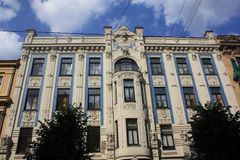
"Youth Style" German Art Nouveau - Birth of Modernist Design. |
|
|
|
SEZESSION |
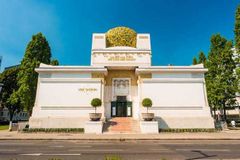
Art Noveau in Austria. |
|
|
|
STILE LIBERTY |
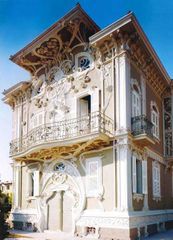
Art Nouveau version in Italy. |
|
|
|
MODERNISMO |
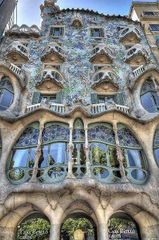
Art Nouveau version in Spain. |
|
|
|
ARTE NOVA |
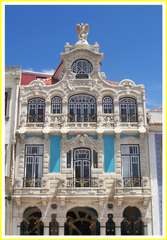
Art Nouveau version in Portugal. |
|
|
|
VICTOR HORTA |
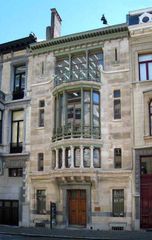
ARCHITECT OF HOTEL TASSEL (BRUSSEL). |
ART NOUVEAU |
|
|
ANTONI GAUDI |
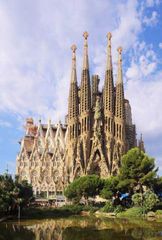
ARCHITECT OF SAGRADA FAMILIA (BARCELONA). |
ART NOUVEAU |
|
|
JOSEPH HOFFMAN |
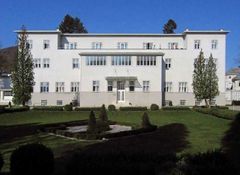
ARCHITECT OF SANATORIUM PURKERSDORF (VIENNA). |
ART NOUVEAU |
|
|
CHARLES RENNIE MACKINTOSH |
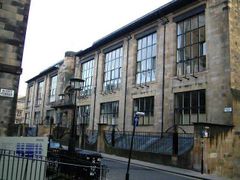
ARCHITECT OF GLASGOW SCHOOL OF ART (GLASGOW). |
ART NOUVEAU |
|
|
YILDIZ, TURKEY |

BY RAIMONDO D'ARONCO |
ART NOUVEAU |
|
|
NEO-BYZANTINE |
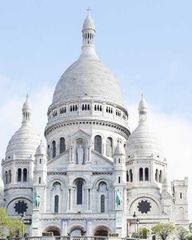
Architectural style of Sacre-Coeur, Paris. |
|
|
|
SACRE COEUR, PARIS |
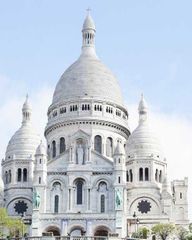
BY PAUL ABADIE & LUCIEN MAGNE |
|
|
|
FRENCH NEO BAROQUE |
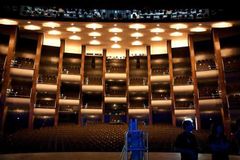
Architectural Character of the Opera House, Cologne. |
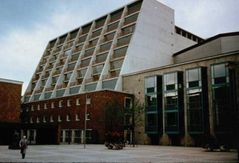
|
|
|
ARTS AND CRAFTS MOVEMENT |
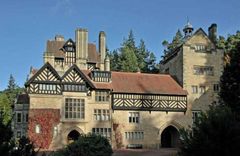
Emerged from the attempt to reform design and decoration in mid-19th century Britain. It was a reaction against a perceived decline in standards that the reformers associated with machinery and factory production. |
|
|
|
AUGUSTE PERRET |
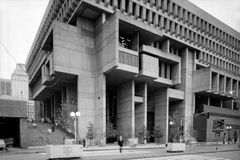
Pioneered the use of "beton brut". |
|
|
|
CLIFTON SUSPENSION BRIDGE, BRISTOL |
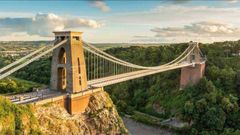
Egyptian Character: Pylons. Designed by Isambard Brunel. |
|
|
|
SWANSEA GUILDHALL |
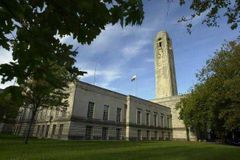
Designed by Sir Percy Thomas. |
|
|
|
PALM HOUSE, ROYAL BOTANIC GARDEN, KEW |

Designed by Decimus Burton and Richard Turner. |
|
|
|
ROCOCO |

Commonly known as Late Baroque, is an exceptionally ornamental and theatrical style of architecture, art and decoration which combines asymmetry, scrolling curves, gilding, white and pastel colors, sculpted molding, and trompe l'oeil frescoes to create surprise and the illusion of motion and drama. |
|
|
|
BAROQUE |

Is a highly ornate and often extravagant style of architecture, music, dance, painting, sculpture and other arts that flourished in Europe from the early 17th until the mid-18th century. It followed Renaissance art and Mannerism and preceded the Rococo and Neoclassical styles. |
|
|
|
EIFFEL TOWER |
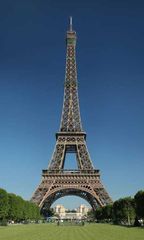
Design by Gustave Eiffel. |
|
|
|
ROBIE HOUSE, CHICAGO |

BY FRANK LLOYD WRIGHT. |
PRAIRIE SCHOOL |
|
|
STATE CAPITOL, VIRGINIA |

By Thomas Jefferson & Charles Louis Clerisseau. |
PALLADIAN ARCHITECTURE |
|
|
EMPIRE STATE BUILDING |
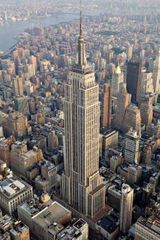
BY WILLIAM LAMB, RICHMOND HAROLD SHREVE & ARTHUR LOOMIS HARMON. |
ART DECO |
|
|
CASA MILA |

By Antoni Gaudi. |
MODERNISME |
|
|
OEIL DE BOEUF |

Means “eye of the steer,” and, in the French chateau of Versailles. It is a small window. |
|
|
|
JAMES HOBAN |
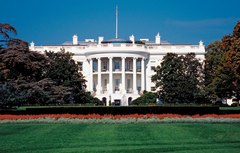
Architect of the White House, Washington, DC. |
|
|
|
FEDERAL STYLE |
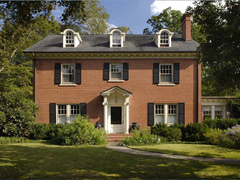
In America, late 18th century architecture and early 19th century building designs were typically based on Roman or Greek architecture. |
|

